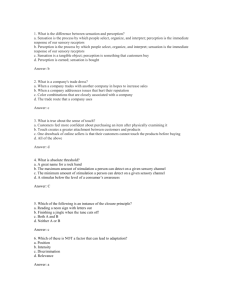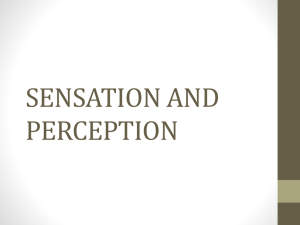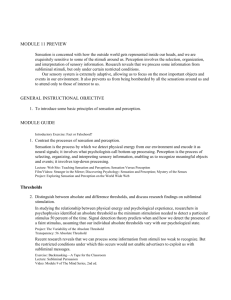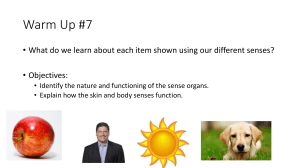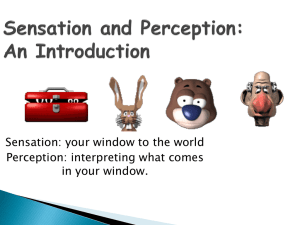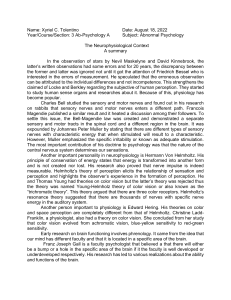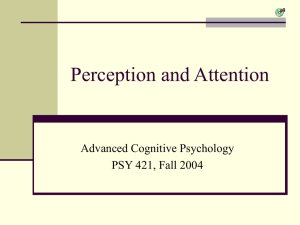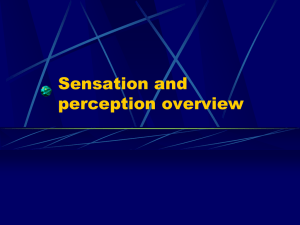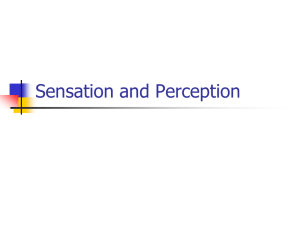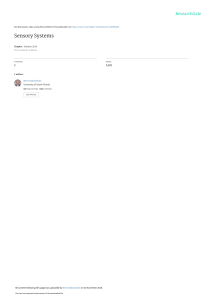Sensation and Perception
advertisement
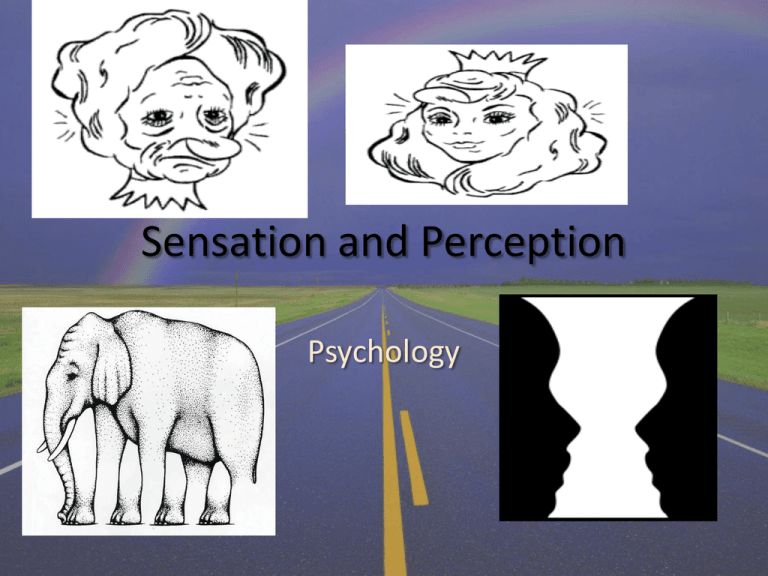
Sensation and Perception Psychology Sensation • The process of detecting a physical stimulus: » Vision (light waves) » Touch (movement of /pressure) » Hearing (sound waves) » Taste (chemical substances) » Smell (chemical substances) » Pain (unique) Psychophysics • A specialty area of psych. that studies sensory limits, sensory adaptation, and related topics. Transduction • Sensory pathway – Bundles of neurons that carry information from the sense organs to the brain. • sights, sounds, and smells are converted to neural impulses that our brain can interpret. Doctrine of Specific Energies • Nervous system encodes sensory messages by ANATOMICAL CODE (uses parts of the body). • Theory works for vision, hearing, and taste. How sensitive are we to changing stimulation? • Absolute threshold: the smallest quantity of physical energy that can be reliably detected by an observer. • Absolute threshold works at least 50 percent of the time. • *People differ in their A.T. Official List Galanter, 1962 • List is on page 151 in your textbook Homework: copy the list into to your notes! Difference threshold (jnd): – Just Noticeable Difference – Definition: The smallest difference in stimulation that can be detected by an observer when two stimuli are compared. And the ability to notice a difference when the amount of a single stimuli increases or decreases. Perception • The process by which the brain organizes and interprets sensory information, transforming it into meaningful objects and events. Perception Perception Perception Difference B/W Sensation and Perception • Sensation = Eating a red grape is Sensation. Taste receptors in your mouth which then sends the info. To the parietal lobes. • Perception = Remembering that you love the taste of red grapes is Perception. “wow this grape is sweet..” Selective attention • we can only focus awareness on a limited part of what we are sensing. Ex. At a party Ex. cafeteria Cocktail party effect • – type of selective attention in which you can attend to only one voice/visual at a time. Sensory Adaptation • Sensory adaptation – Loss of responsiveness in receptor cells after stimulation has remained unchanged for a while Sensory Deprivation • The absence of normal levels of sensory stimulation. • Read study on page 154 Learning Targets • Compare three forms of visual detection. Judge the effectiveness of psychophysics technology to aid in human visual detection. • 1. Signal Detection Theory • 2. Echolocation • 3. Connecting computers to the visual cortex Signal-Detection Theory • The belief that the ability to detect a signal varies with the characteristics of the perceiver, the background, and the stimulus itself. Signal Detection Theory Stimulus is Present Stimulus is Absent Response: “Present” Hit False Alarm Response: “Absent” Miss Correct Rejection S-D theory • Physical condition can affect detection of a signal • Psychological factors i.e., attention level and states of motivation can affect detection of a signal Process 1.Stimulus event 2.Neural activity 3.Comparisons with personal standard 4. Action (or no action) Practical examples of S-D Theory • Walking down a darkened street by yourself late at night, you may be especially attentive to even the slightest sounds b/c they signal danger. Fail to notice the same sounds in broad daylight.
